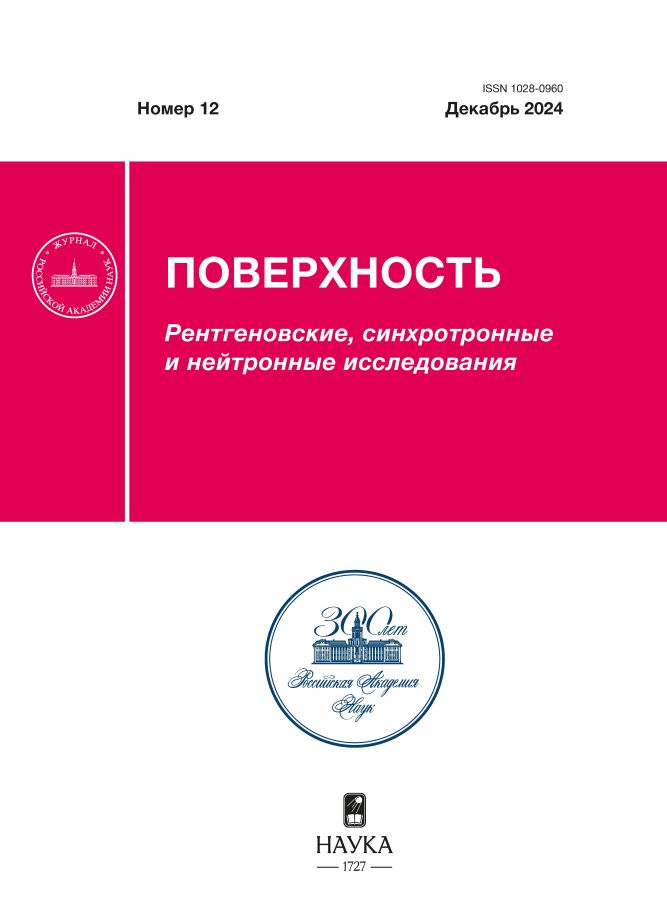Gd reference layer method for the case of two reflectometry experiments
- Авторлар: Nikova Е.S.1, Salamatov Y.А.1, Kravtsov Е.А.1
-
Мекемелер:
- Miheev Institute of Metal Physics UB RAS
- Шығарылым: № 12 (2024)
- Беттер: 94-101
- Бөлім: Articles
- URL: https://transsyst.ru/1028-0960/article/view/685360
- DOI: https://doi.org/10.31857/S1028096024120118
- EDN: https://elibrary.ru/QWMAOS
- ID: 685360
Дәйексөз келтіру
Аннотация
The article presents an approach to determining the modulus and phase of the neutron reflectance using a gadolinium reference layer, which allows reducing the number of necessary experiments from three to two. It is shown that it is possible to reconstruct the reflection amplitude based on the results of only two reflectometric experiments. However, when conducting two experiments, calculating the reflection amplitude is complicated by the fact that there will be two solutions instead of one. Therefore, it is necessary to evaluate the obtained results, since one of these solutions will have no physical meaning. The results are evaluated based on a priori information about the sample or with the help of additional modeling of the interaction potential. The theory of the proposed approach is described in detail, and it is tested on model numerical calculations for the Al2O3//Ti film. Experimental results for the test samples Al2O3//Nb and Si//Cr/Fe/Cr are presented. A comparison of the moduli and phases of the reflectivity obtained by processing three and two experiments is carried out. It was found that under conditions of poor statistics, conducting two experiments is preferable, since the solution, in this case, contains fewer artifacts of mathematical processing.
Толық мәтін
Авторлар туралы
Е. Nikova
Miheev Institute of Metal Physics UB RAS
Хат алмасуға жауапты Автор.
Email: e.nikova@mail.ru
Ресей, Ekaterinburg
Yu. Salamatov
Miheev Institute of Metal Physics UB RAS
Email: e.nikova@mail.ru
Ресей, Ekaterinburg
Е. Kravtsov
Miheev Institute of Metal Physics UB RAS
Email: e.nikova@mail.ru
Ресей, Ekaterinburg
Әдебиет тізімі
- de Haan V.O., van Well A.A., Sacks P.E., Adenwalla S., Felcher G.P. // Phys. Rev. B. 1996. V. 221. P. 524.
- Majkrzak C.F., Berk N.F. // Phys. Rev. B.1995. V. 52. P. 10827.
- Никова Е.С, Саламатов Ю.А., Кравцов Е.А., Макарова М.В., Проглядо В.В., Устинов В.В., Боднарчук В.И., Нагорный А.В. // Физика металлов и металловедение. 2019. V. 120. P. 913.
- Никова Е.С., Саламатов Ю.А., Кравцов Е.А., Проглядо В.В., Жакетов В.Д., Миляев М.А. // Поверхность. Рентген., синхротр. и нейтрон. исслед. 2022. № 11. P. 15. https://doi.org/10.31857/S1028096022110176
- de Haan V.O., van Well A.A., Adenwalla S., Felcher G.P. // Phys. Rev. B. 1995. V. 52. № 15. P. 10831
- Majkrzak C.F., Berk N.F. // Phys. Rev. B. 1998. V. 58. P. 15416.
- Majkrzak C.F., Berk N.F., Silin V. // Phys. Rev. B. 2000. V. 283. P. 248.
- Leeb H., Grötz H., Kasper J., Lipperheide R.// Phys. Rev. B. 2001. V. 63. P. 045414
- Lynn J.E., Seeger P.A. // Atomic Data and Nuclear Data Tables. 1990. V. 44, Iss. 2. P. 191
- Никова Е.С., Саламатов Ю.А., Кравцов Е.А. // Поверхность. Рентген., синхротр. и нейтрон. исслед. 2023. № 7. P. 102. EDN: TEZEMM https://doi.org/10.31857/S1028096023070117
- Agranovich Z. S., Marchenkow V. S. The inverse Problem of Scattering Theory. Gordon and Breach. New York. 1963. 290 p.
- Chadan K., Sabatier P. C. Inverse Problems in Quantum Scattering Theory. Text and Monographs in Physics. Springer. Berlin. 2nd ed., 1989. 250 p.
- Kay I. // Comm. Pure and Appl. Math.1960.V. 13. P. 371.
- Levenberg K. A // Quart. Appl. Math. 1944. V. 2. P. 164.
- Marquardt D.// SIAM Journal on Applied Mathematics.1963. V. 11 (2). P.431.
- Majkrzak C.F., Berk N.F., Perez-Salas U.A. // Langmuir. 2003. V. 19, P. 7796.
- Paul E. Sacks and Tuncay Aktosun // SIAM J. Appl. Math. 2000. V. 60, № 4, P.1340.
- Nikova E.S., Salamatov Yu.A, Kravtsov E.A., Bodnarchuk V.I., Ustinov V.V. // Physica B. 2019. V. 552. P. 58.
- Nikova E.S., Salamatov Yu. A. , Kravtsov E. A. , Ustinov V. V. , Bodnarchuk V. I. , Nagorny A. V. // J. Surf. Invest.: X-Ray, Synchrotron Neutron Tech. 2020. V. 14. P. 164.
Қосымша файлдар

















